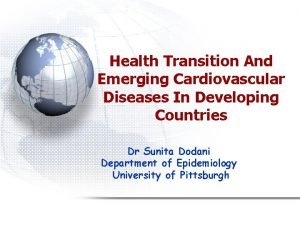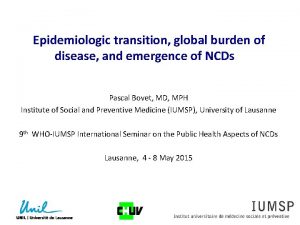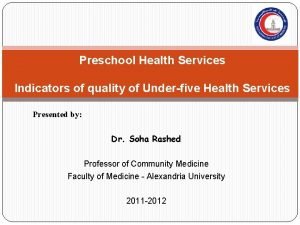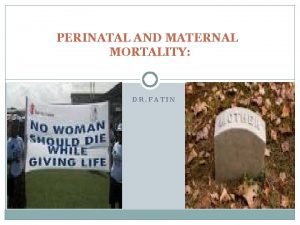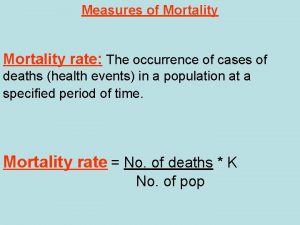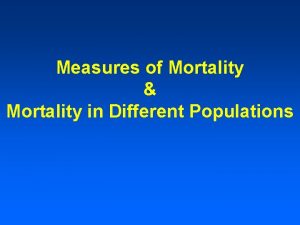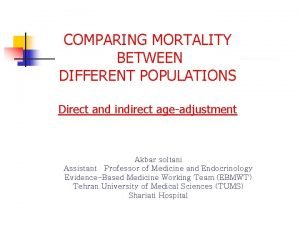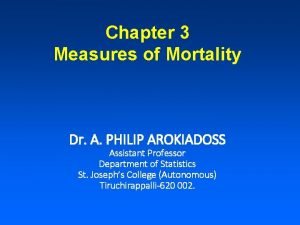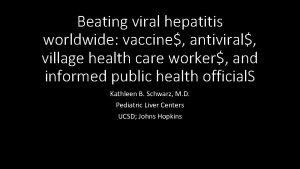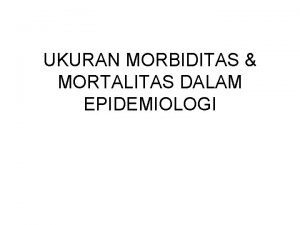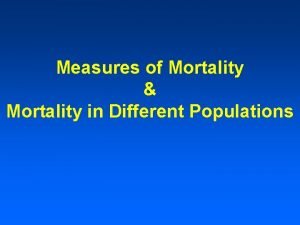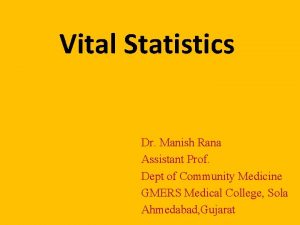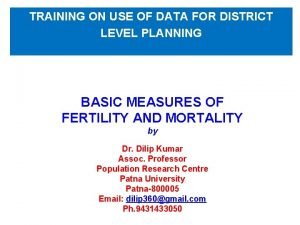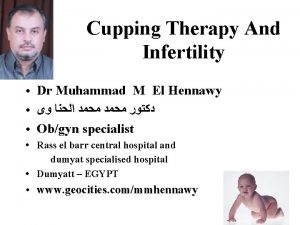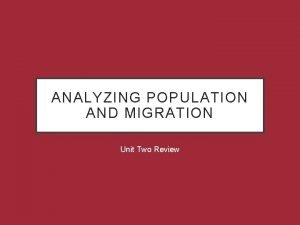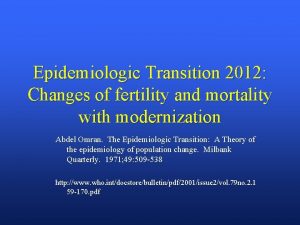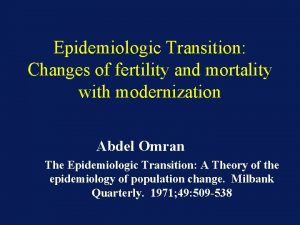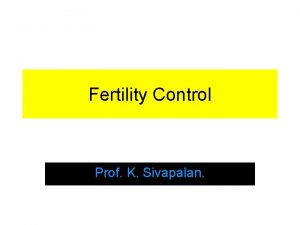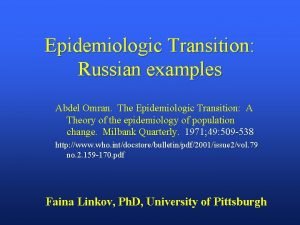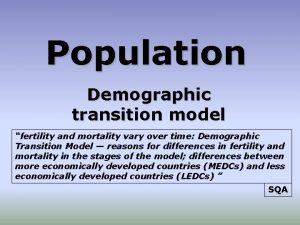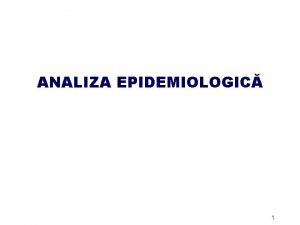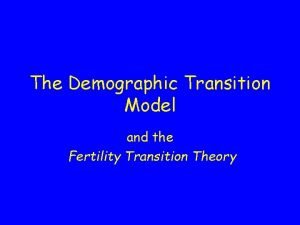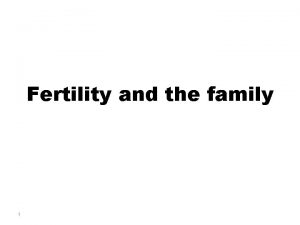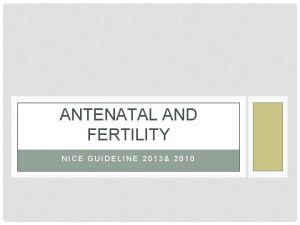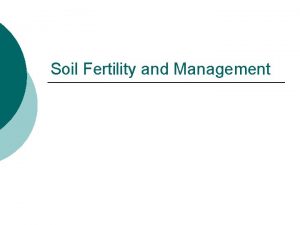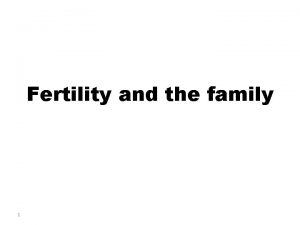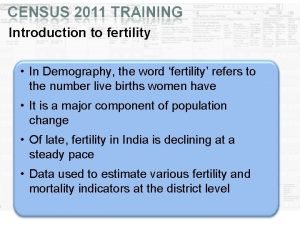Epidemiologic Transition Changes of fertility and mortality with
































![High Incidence of NCDs in Developing Countries ] Possible Infectious Etiology Macronodular Cirrhosis Hepatocellular High Incidence of NCDs in Developing Countries ] Possible Infectious Etiology Macronodular Cirrhosis Hepatocellular](https://slidetodoc.com/presentation_image_h/182ce328d286967d4f28f41f707682af/image-33.jpg)








- Slides: 41

Epidemiologic Transition: Changes of fertility and mortality with modernization (3) Abdel Omran. The Epidemiologic Transition: A Theory of the epidemiology of population change. Milbank Quarterly. 1971; 49: 509 -538

Abdel Omran Evolution of Disease Charles Darwin Evolution of Species

Epidemiology v v v Psychiatric Epidemiologists Diabetes Epidemiology Cardiovascular Epidemiology Cancer Epidemiology Infectious Disease Epidemiology

Instead at looking at individual diseases, we need to look at the patterns of diseases

Mortality is the fundamental factor in the dynamics of population growth and causes of death. Mortality has no fixed upper limits. Thus if fertility approached its upper maximum, depopulation would still occur.

During the epidemiologic transition, a long-term shift occurs in mortality and disease patterns whereby pandemics of infection are replaced by degenerative and man-made diseases. . .

Age of Pestilence and Famine Characterized by high mortality rates, wide swings in the mortality rate, little population growth and very low life expectancy

Age of Receding Pandemics Epidemics become less frequent, infectious diseases in general become less frequent, a slow rise in degenerative diseases begin to appear

The shifts in disease patterns in the 19 th century were primarily related to changing SES. With the 20 th Century more related with disease control activities independent of SES: e. g. Mexico, China





Epidemiologic Transition in Developing and Developed Countries

14 years 35 years




Increasing Life Expectancy and Causes of Death 100 Other 80 60 Violence 40 20 CHD CA Infection 0 40 44 48 52 56 60 64 68 Population Life Expectancy 72 76





Mortality Rates Infectious Diseases NCD Epidemiologic Transition

Death Rates for TB in England Wales TB Bacillus Identified Chemotherapy BCG Vaccination

Death Rates for Measles in Children in England Wales Immunization begun

Mortality Rates NIDDM CHD Trauma CA Epidemiologic Transition





![High Incidence of NCDs in Developing Countries Possible Infectious Etiology Macronodular Cirrhosis Hepatocellular High Incidence of NCDs in Developing Countries ] Possible Infectious Etiology Macronodular Cirrhosis Hepatocellular](https://slidetodoc.com/presentation_image_h/182ce328d286967d4f28f41f707682af/image-33.jpg)
High Incidence of NCDs in Developing Countries ] Possible Infectious Etiology Macronodular Cirrhosis Hepatocellular Carcinoma Rheumatic Heart Disease Iron deficiency anemia ] Related to Nutrition Deficiency Endemic Goiter Malnutrition Related Diabetes.

High Incidence of NCDs in Developed Countries Cardiovascular CHD Deep Vein Thrombosis Respiratory Emphysema Lung CA Female Genital Endometriosis Endometrial CA Breast CA Fibrocystic Disease Male Genital Prostrate CA Metabolic NIDDM

Back to Nature v Improved Physical activity v A Healthier Diet, less saturated fats, more fiber v Less Stress

Transition v v v Nomads Farmers Urban 45 yrs 60 yrs 70 yrs

1960 Urban rural USA Rural urban Developing Countries

2010 Urban Rural urban rural USA Developing Countries

Causes of Death n n Developed Developing Age 15 -44 Accidents CA CHD Accidents CHD CA Age 45 -54 CHD CA Accidents

Conclusion The epidemiologic transition ties together fertility with rise in SES. The Second component is that it present the idea that disease appears in populations like a symphony with disease rising and falling, all in relationship to each other

Review Questions (Developed by the Supercourse team) • What might the epidemiologic transition tell us about the evolution of chronic diseases? • Over the past 100 years, life expectancy and causes of death have become homogenous world wide. Why is this important?
 Epidemiologic transition
Epidemiologic transition Epidemiological transition model
Epidemiological transition model Obesity and bone health
Obesity and bone health An epidemiologic survey of roller skating injuries
An epidemiologic survey of roller skating injuries Eyal shahar
Eyal shahar Epidemiologic triangle
Epidemiologic triangle Changes in latitudes, changes in attitudes meaning
Changes in latitudes, changes in attitudes meaning Physical and chemical change examples
Physical and chemical change examples Morbidity and mortality difference
Morbidity and mortality difference Flacker score
Flacker score Themes in the great gatsby
Themes in the great gatsby Disease specific mortality rate formula
Disease specific mortality rate formula Neonatal mortality rate
Neonatal mortality rate Perinatal mortality rate
Perinatal mortality rate Proportionate mortality rate formula
Proportionate mortality rate formula Death rate formula
Death rate formula Indirect age adjustment
Indirect age adjustment Age adjusted mortality rate definition
Age adjusted mortality rate definition Attributable mortality
Attributable mortality Prevalence rate formula
Prevalence rate formula Continuous mortality investigation
Continuous mortality investigation Mortality vs morbidity
Mortality vs morbidity Infant mortality rate formula
Infant mortality rate formula Mystery and miracle
Mystery and miracle Infant mortality rate formula
Infant mortality rate formula Morbiditas adalah
Morbiditas adalah Neonatal mortality rate formula
Neonatal mortality rate formula Mortality definition pdhpe
Mortality definition pdhpe Nir ap human geography
Nir ap human geography Asmfr
Asmfr Grr and nrr formula
Grr and nrr formula Sta clara obando
Sta clara obando Formula of population density
Formula of population density Contoh soal grr
Contoh soal grr Solary twiks
Solary twiks Down with kitchen slavery
Down with kitchen slavery Cupping for infertility
Cupping for infertility Gross migration rate formula
Gross migration rate formula Christian views on fertility treatment
Christian views on fertility treatment Fertility capability classification
Fertility capability classification Hybrid fertility
Hybrid fertility Doreen perera
Doreen perera

